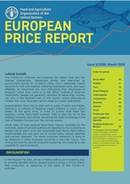出版物
The GLOBEFISH Trade Statistics focus on trends in trade flows for the major product groups and most important traders using the most recently available data. Data is sourced from the relevant trade statistics agency of the respective reporting country or territory. Due to differences in reporting lag, global level data will exclude any trade that had not been reported by the relevant reporting body as of the last month specified for year-to-date aggregation. Product groups...

The conflict between Russia and Ukraine is impacting the world market for seafood products. The recently imposed sanctions will lead to a disruption of many established trade routes. Among these is the trade of Russian Alaska pollack through China for processing, a product that is now prevented from being re-exported to the US or European market. For the time being, however, Russian exports of Alaska pollack to Chinese processing plants continue without delays.
Meanwhile, seafood imported...

The annual consumer price index in the EURO zone was 5.1 percent in January 2022, up from 5.0 percent in December 2021. In France inflation was lower, with the annual consumer price index up 2.9 percent in January 2022, compared with 2.8 percent in December 2021. The increased cost of energy and services is contributing to upward pressure on production costs both at sea and on land. Combined with higher transport costs (especially for imported...

Consumption of seafood is low in Europe at present, which is expected for this time of year. However, preparations for Chinese New Year mean strong demand from China, and this has prevented prices in Europe from falling too far.
Restaurants were open in France during the end of year season in spite of the current COVID-19 resurgence, but increasingly the Omicron threat has seen restrictions reimposed in the restaurant industry. New measures are being introduced in...
With the world’s population expected to reach 8.2 billion people by 2030, and with 842 million people estimated as having been undernourished in the period 2011–13, food supply will present a growing challenge in the next two decades.
With increases in income along with demographic changes related to family size, population ageing and urbanization, and consumer trends such as concerns for healthy eating and sustainable production, there will be great shifts in demand and major changes...



